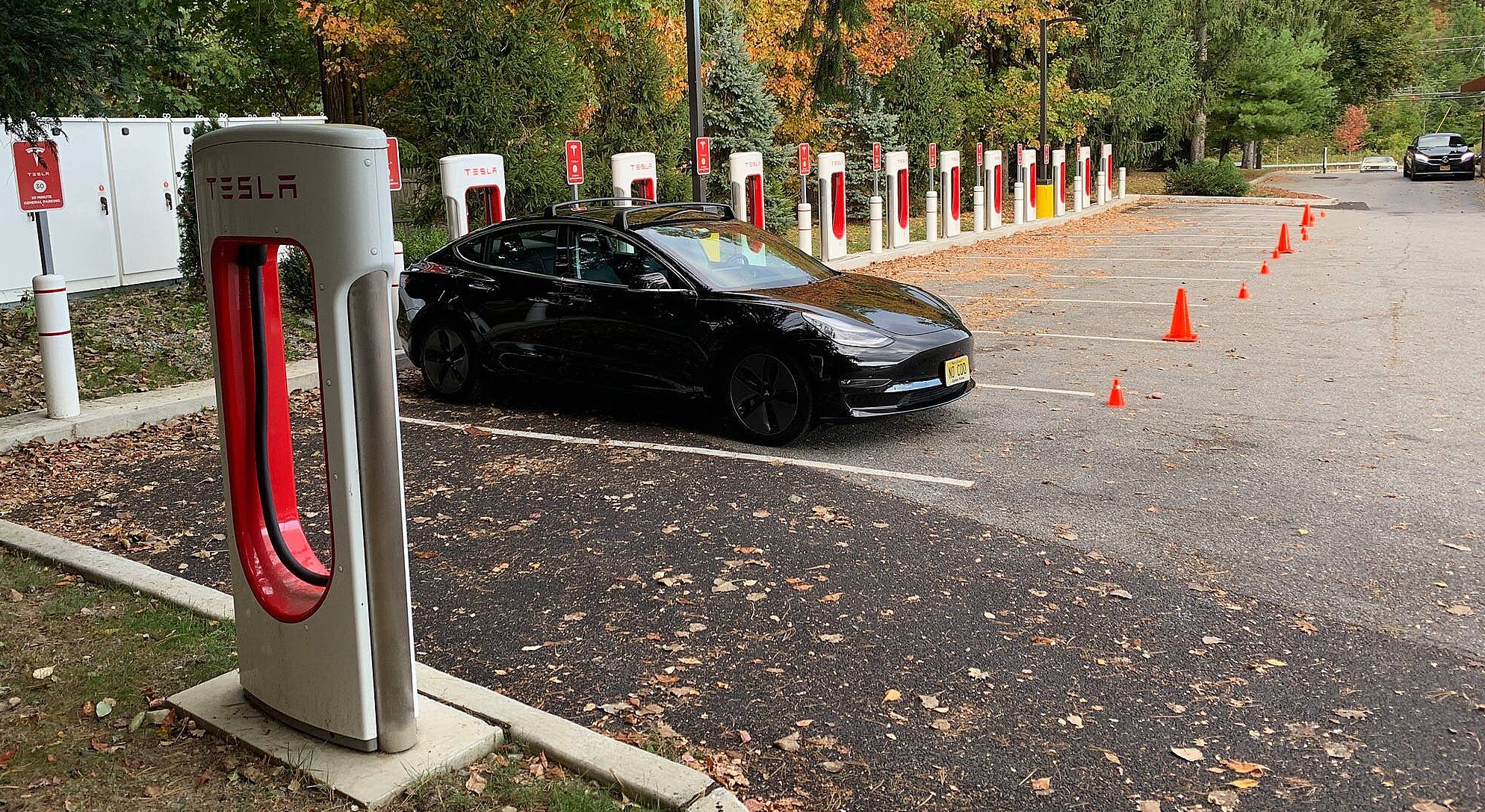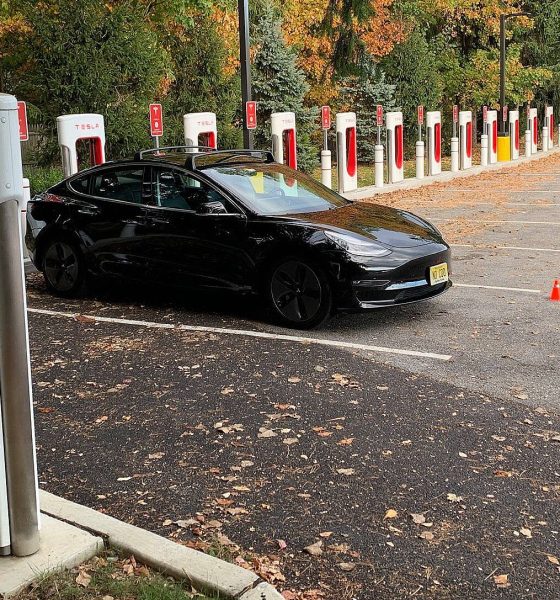Welcome to a FREE preview of our weekly exclusive! Each week our team goes ‘Beyond the News’ and handcrafts a special edition that includes our thoughts on the biggest stories, why it matters, and how it could impact the future.
You can receive this newsletter along with all of our other members-exclusive newsletters, become a premium member for just $3/month. Your support goes a long way for us behind the scenes! Thank you.
—
The recent headlines about Dyson’s abandoned efforts at making an electric car were probably music to the EV-doubter crowd’s ears. I assume this not so much because the Rolls Royce of vacuum companies had difficulty transitioning into a completely different industry, but because of the reason given for the shut down:
“However, though we have tried very hard throughout the development process we simply can no longer see a way to make it commercially viable.”
Sure, the jokes are funny. (“I guess they ‘sucked’ at making cars,” etc.) But the dissenters will point to this as yet another example of why the long-term prospects of EVs are overestimated by a long shot. No amount of regulations can fix the business-case and economic fact that there’s a huge cost obstacle to manufacturing battery-electric vehicles that can only bring the price down so much. Even Elon Musk has commented about this, saying something along the lines of how he doesn’t hate cheaper cars; they’re just not possible to make right now.
Quite possibly the biggest obstacles to widespread EV adoption is the affordability factor (the other being supply chain limiting production capability). While Tesla is obviously working on this aspect and some might argue they’re already there with a $35k Standard Range Model 3 (downgraded post-purchase), it really seems like it’s going to be an issue for a long time for companies other than Tesla. In other words, Tesla will probably figure out mass market, cheap cars way quicker than their competitors and stay ahead of the game for years if not decades. Is that a win for the movement, though?
To be perfectly honest, I’m a market principles person. My favorite part about Tesla (and SpaceX) was how a customer-driven approach was taken to revolutionize an industry (or two) after the government-driven approach had been wanting at best. The myths about EV ownership don’t exist in a vacuum (sorry, I had to). They came from a history of compliance EVs that were produced to merely meet requirements and not a bit of innovation more. For people that can’t afford a Tesla, it doesn’t matter that the company has achieved amazing things with their product. Their perspective is somewhat like scrolling through various celebrity Instagram accounts: How nice for them!
If Tesla wants to lead a movement of battery-powered vehicles on a global scale, someone has to be able to keep up. Right? Porsche seems to be on the right track, but they’re even less affordable than a Tesla and have always only sought to appeal to a niche luxury market. It seems to me that the issue is something beyond the tech itself, considering Tesla has “open sourced” its patents. What is it? What is driving huge companies with huge resources to fail at even creating a Tesla-level vehicle circa 2012?
I do think it’s a bit lazy to blame it on oil profits. If EVs made as much business sense for those “gasoline/diesel-centered” companies as it does for Tesla, they’d convert in a heartbeat. That’s the bit about markets that you can usually rely on. If there’s money to gain, there are players waiting to cash in. Also, there will be a market for oil companies for a long time due to manufacturing needs, and their investors are perfectly willing to diversify their portfolios with other things that make good money.
Or maybe that’s it in itself? Once Tesla has the cost-ratio figured out, the other players will follow along and start investing serious money in repeating that success. But what if that’s not it? How committed can Tesla be to its own movement if no one can catch up? Do others need to catch up? Will “good enough” be enough for global EV adoption with Tesla always representing the luxury segment of the market?

Lifestyle
Tesla Model S Plaid battles China’s 1500 hp monster Nurburgring monster, with surprising results
There is just something about Tesla’s tuning and refinement that makes raw specs seem not as game-changing.

The Tesla Model S Plaid has been around for some time. Today, it is no longer the world’s quickest four-door electric sedan, nor is it the most powerful. As per a recent video from motoring YouTube channel Carwow, however, it seems like the Model S Plaid is still more than a match for some of its newer and more powerful rivals.
The monster from China
The Xiaomi SU7 Ultra is nothing short of a monster. Just like the Model S Plaid, it features three motors. It also has 1,548 hp and 1,770 Nm of torque. It’s All Wheel Drive and weighs a hefty 2,360 kg. The vehicle, which costs just about the equivalent of £55,000, has been recorded setting an insane 7:04.957 at the Nurburgring, surpassing the previous record held by the Porsche Taycan Turbo GT.
For all intents and purposes, the Model S Plaid looked outgunned in Carwow’s test. The Model S Plaid is no slouch with its three motors that produce 1,020 hp and 1,420 Nm of torque. It’s also a bit lighter at 2,190 kg despite its larger size. However, as the Carwow host pointed out, the Model S Plaid holds a 7:25.231 record in the Nurburgring. Compared to the Xiaomi SU7 Ultra’s record, the Model S Plaid’s lap time is notably slower.
Real-world tests
As could be seen in Carwow’s drag races, however, Tesla’s tech wizardry with the Model S Plaid is still hard to beat. The two vehicles competed in nine races, and the older Model S Plaid actually beat its newer, more powerful counterpart from China several times. At one point in the race, the Xiaomi SU7 Ultra hit its power limit due to its battery’s temperature, but the Model S Plaid was still going strong.
The Model S Plaid was first teased five years ago, in September 2020 during Tesla’s Battery Day. Since then, cars like the Lucid Air Sapphire and the Xiaomi SU7 Ultra have been released, surpassing its specs. But just like the Model Y ended up being the better all-rounder compared to the BYD Sealion 7 and the MG IM6, there is just something about Tesla’s tuning and refinement that makes raw specs seem not as game-changing.
Check out Carwow’s Model S Plaid vs Xiaomi SU7 drag race video below.
Lifestyle
500-mile test proves why Tesla Model Y still humiliates rivals in Europe
On paper, the BYD Sealion 7 and MG IM6 promised standout capabilities against the Model Y.

BYD is seeing a lot of momentum in Europe, so much so that mainstream media has taken every opportunity to argue that the Chinese automaker has beaten Tesla in the region. But while BYD sales this year in Europe are rising and Tesla’s registrations remain challenged, the raw capabilities of vehicles like the Model Y are difficult to deny.
This was highlighted in a 500-mile challenge by What Car? magazine, which showed that the new Tesla Model Y is more efficient, cheaper to run, and more reliable than rivals like the BYD Sealion 7, and even the nearly 400 KW-charging MG IM6.
Range and charging promises
On paper, the BYD Sealion 7 and MG IM6 promised standout capabilities against the Model Y. The Sealion 7 had more estimated range and the IM6 promised significantly faster charging. When faced with real-world conditions, however, it was still the Model Y that proved superior.
During the 500-mile test, the BYD nearly failed to reach a charging stop, arriving with less range than its display projected, as noted in a CarUp report. MG fared better, but its charging speeds never reached its promised nearly-400 kW charging speed. Tesla’s Model Y, by comparison, managed energy calculations precisely and arrived at each stop without issue.
Tesla leads in areas that matter
Charging times from 25% to 80% showed that the MG was the fastest at 17 minutes, while Tesla and BYD were close at 28 and 29 minutes, respectively. Overall efficiency and cost told a different story, however. The Model Y consumed 19.4 kWh per 100 km, compared to 22.2 for MG and 23.9 for BYD. Over the full trip, Tesla’s charging costs totaled just £82 thanks to its supercharger network, far below BYD’s £130 and MG’s £119.
What Car? Magazine’s testers concluded that despite BYD’s rapid sales growth and the MG IM6’s seriously impressive charging speeds, Tesla remains the more compelling real-world choice. The Model Y just offers stability, efficiency, and a proven charging infrastructure through its Supercharging network. And as per the magazine’s hosts, the Model Y is even the cheapest car to own among the three that were tested.
Watch What Car? Magazine’s 500-mile test in the video below.
Lifestyle
Tesla Cybertruck slapped with world’s least intimidating ticket, and it’s pure cringe
One cannot help but cringe and feel second-hand embarrassment at the idea of a person just driving around with a stack of these babies.

A Cybertruck parked at Stanford Shopping Center in California was recently hit with what might be the most try-hard piece of paper ever slipped under a wiper blade: a “fake citation” accusing the driver of supporting a “fascist car.”
The note, shared on X by Tesla staff program manager Ryan Torres, quickly made the rounds on X, where it quickly gained attention as an example of how not to protest.
The world’s least intimidating ticket
According to the citation, the supposed “violation” was “driving a fascist car.” The remedial action? Take the bus, call an Uber, or ride a bike. The note also dubbed Elon Musk a “chainsaw-wielding Nazi billionaire.” Now, protests against Tesla and Elon Musk have become commonplace this year, but one cannot help but cringe and feel second-hand embarrassment at the idea of a person just driving around with a stack of fake anti-Tesla/Musk citations.
Torres pointed out the irony himself in his post on X. Tesla currently employs over 140,000 Americans, and SpaceX has put the U.S. firmly back at the top of space technology. As Torres put it, maybe the person behind the world’s least intimidating ticket should “read a book on innovation before vandalizing” other people’s property.
Peak performative clownery
Not to mention that the fake ticket’s logic collapses under its own weight. EVs like the Cybertruck are literally designed to reduce emissions, not “destroy the economy.” If anything, Tesla has bolstered the United States’ economy by fueling jobs in engineering, manufacturing, and clean energy. It’s not the first time a Tesla has been the target of vandalism or politically charged notes, but this one stands out for sheer cringe value.
Torres summed it up neatly: “Peak clownery.” On that point, at least, the citation earns full marks. In a way, though, perhaps cringe fake tickets are not as bad as the literal firebombs that were being thrown at Tesla stores and cars earlier this year because some critics were gleefully misinformed about Elon Musk.










